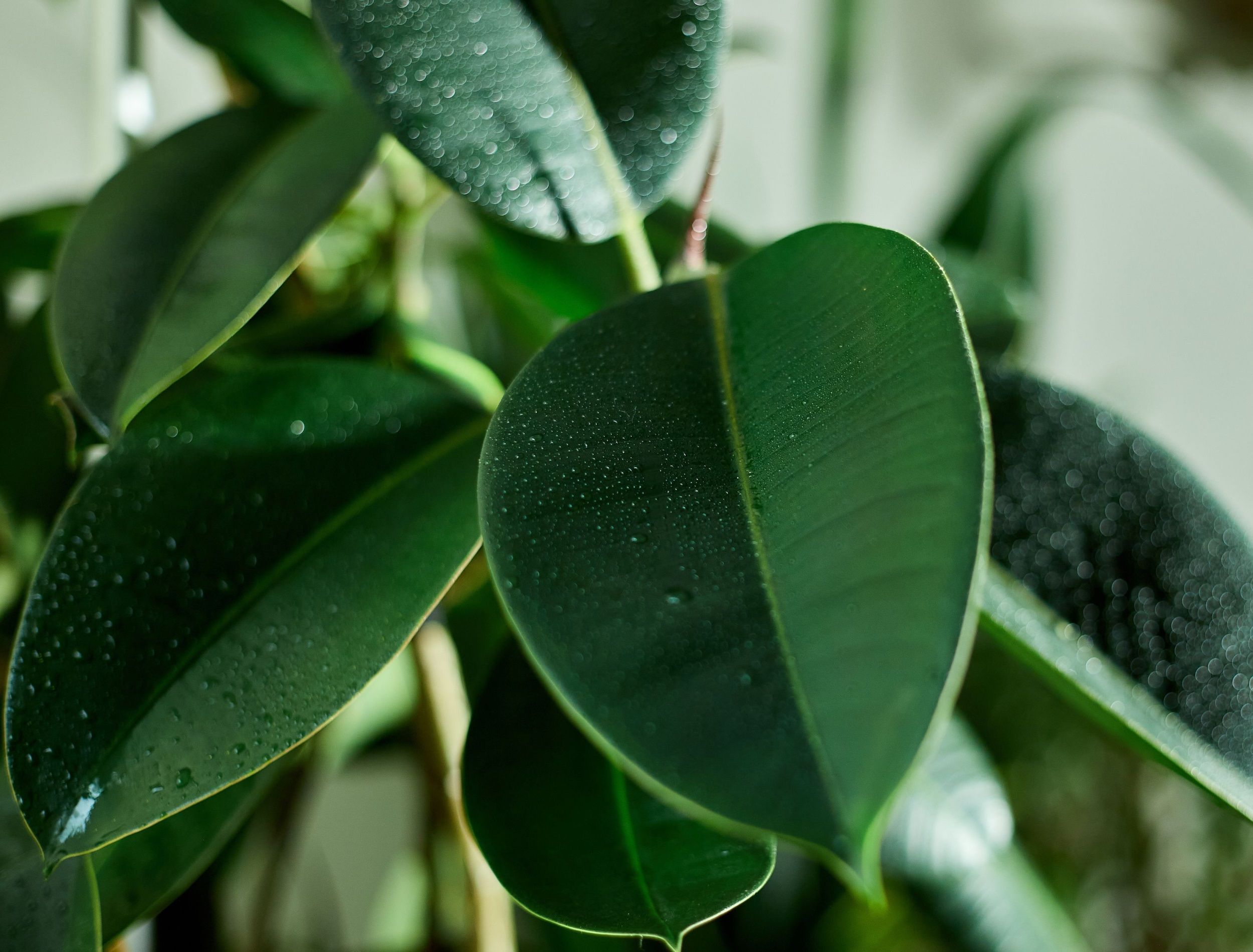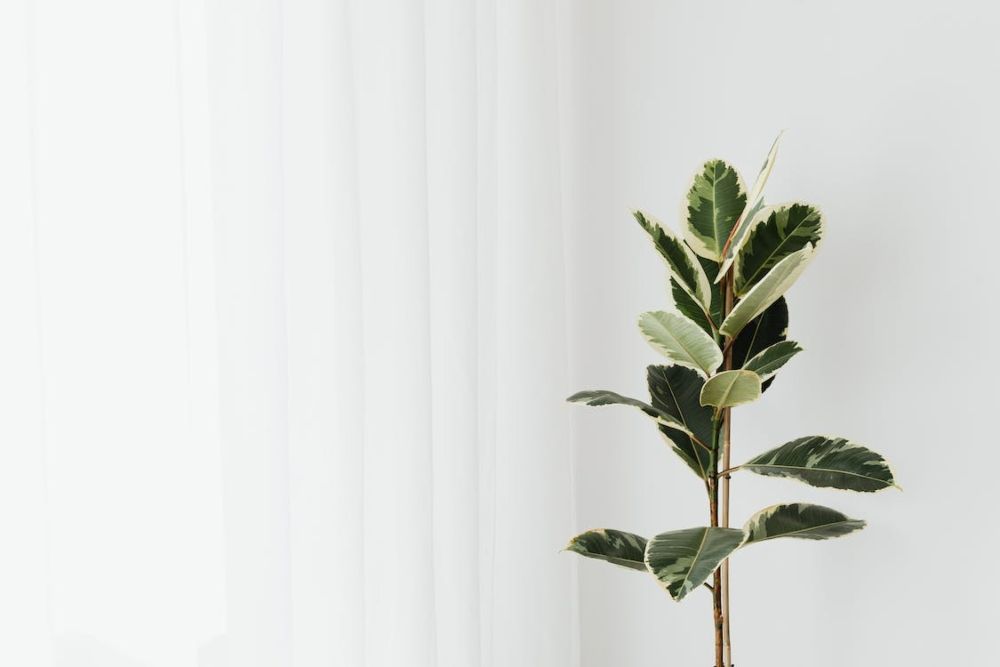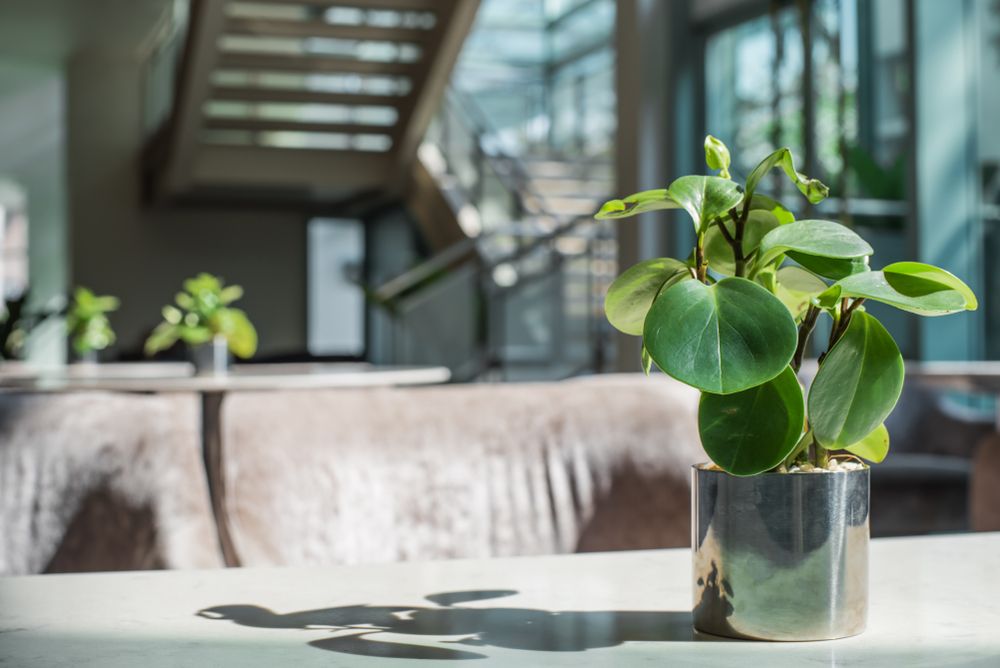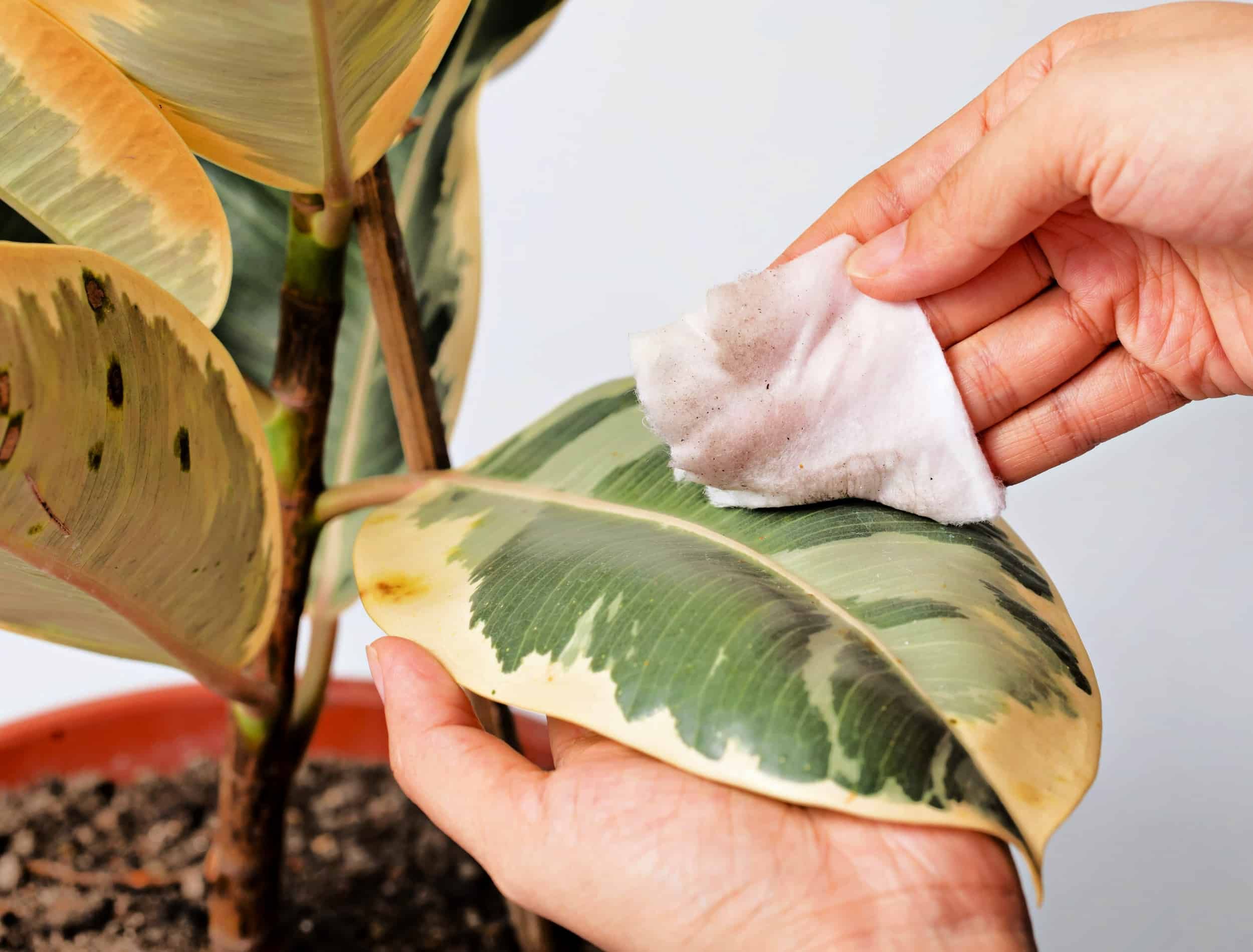The Rubber tree plant or Ficus elastica is a low-maintenance plant that can be grown both indoors and out. Their striking appearance will add greenery to your home. In their natural habitat, they can reach heights of up to 100 feet and half of that size in a home garden.
Below is the variety of rubber tree plants that you can grow indoors and out.
Doescheri
Image credits: Scott Webb via Unsplash
Doescheri has grey and cream variegated leaves with pink ribs on their reverse side making it a beautiful addition to any home. They thrive in temperatures between 60 to 70 degrees Fahrenheit at night and 75 to 80 degrees Fahrenheit during the day. This low-maintenance plant is tolerant of humidity and drought and benefits from monthly high-nitrogen fertilizer. Rotate your plant every two weeks to encourage even growth.
Although it is readily clipped to the right size for a houseplant, it can grow up to 13 feet. It can grow as an evergreen or deciduous tree, shrub, or climber. They usually have leathery, simple, or whole-lobed leaves with their tiny blooms housed inside which enlarge to form a fruit. Plant it in humus-rich, wet, and well-drained soil in full sun or moderate shade with protection from wind and frost.
Tricolor
Image credits: Karolina Grabowska via Pexels
Create an excellent focal point in any space with this stunning ficus tree -- its 'tricolor' leaves come in cream, green, and pink.
During the growing season, keep the soil moist and apply occasional fertilizer. Outside the growing season (March to September), allow your plant to dry out between watering. This low-maintenance plant is ideal for you if you want to start your gardening journey.
Burgundy
Image credits: Eric Fiori via Unsplash
The burgundy plant can grow up to 40 feet! However, as a houseplant, it usually grows from 12 to 72 inches. It has thick glossy leaves that are deep red with light red midribs. Place this plant in bright light -- direct sunlight will produce a deeper burgundy while low light will cause the leaves to fade to light green.
It requires regular watering when the top layer of soil becomes dry. But be careful not to get water on its leaves as it will cause them to stain. Wipe the leaves with a moist cloth when cleaning them. Cut back watering to every couple of weeks during the winter.
Keep a look out for insects such as mealy bugs which can cause white patches on the leaves and kill your houseplant.
Robusta
Image credits: Igor Son via Unsplash
Ficus Robusta has beautiful large green leaves and can grow up to 6 feet tall. The plant thrives in low humidity with temperatures between 60 to 75 degrees Fahrenheit.
Provide bright, indirect light however, it will still do well in a shadier environment. Water when the top layer of the soil starts to dry out but avoid over or underwatering your plant -- it can cause yellow leaves and death.
Fertilize your plant between March and September and prune it in the spring to encourage healthy growth. Robusta leaves are prone to collect dust so wipe them when necessary. But be careful as the plant may release sap.
Decora
Image credits: Kaset Chukittipong via Shutterstock
The plant looks stunning in hanging baskets and has thick foot-long glossy, green leaves. This rubber plant flourishes in temperatures between 60 to 70 degrees Fahrenheit at night and 75 to 80 degrees Fahrenheit during the day and this plant grows healthier in indirect sunlight.
It can be watered when the soil becomes slightly dry but make sure that there are enough drainage holes at the bottom of the pot or basket to let the water flow. You must fertilize it every two weeks with a diluted fertilizer for a healthier plant.
Tineke
Image credits: AngieYeoh via Shutterstock
This plant has beautiful pink stems plus light green and cream foliage. If you're looking for a stunning centerpiece -- this plant is an excellent choice, you can place it in a pot and it will look great. The plant does well in bright indirect light does well in temperatures like 55 degrees Fahrenheit and medium humidity.
Tineke receives regular watering from March to September, but less frequently throughout the winter which encourages the plant to be healthier and flourish.
However, provide proper water care as it can lead to root rot and bug infestation. Moreover, fertilize your plant once a month with half-strength liquidized fertilizer.
Get Yourself A Rubber Tree!
Rubber tree plants come in many varieties that are easy to care for. Finding the right indoor and outdoor plant for your home can be a task. These gorgeous babies will not only bring your entire place together but will also be a feast for sore eyes.
Handle with care -- this plant might be irritating to the eyes, keeping them out of reach of pets and children.
Have you purchased any rubber trees? If so then which one is your favorite and where did you place them? Share in the comments below.







